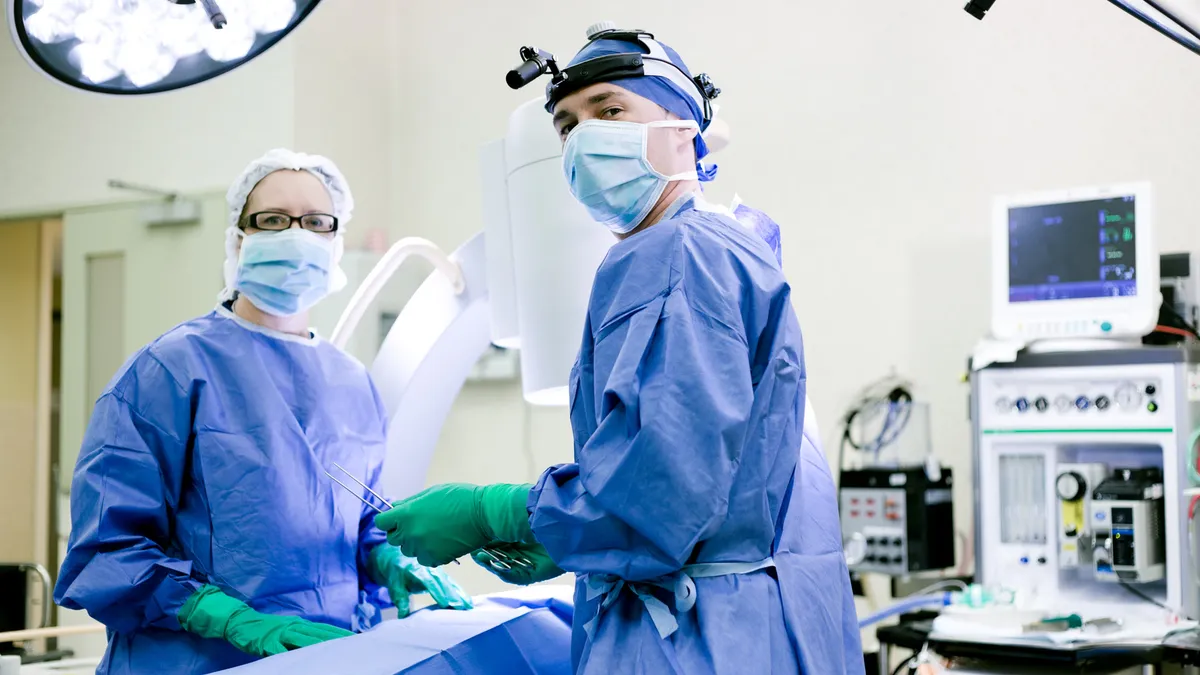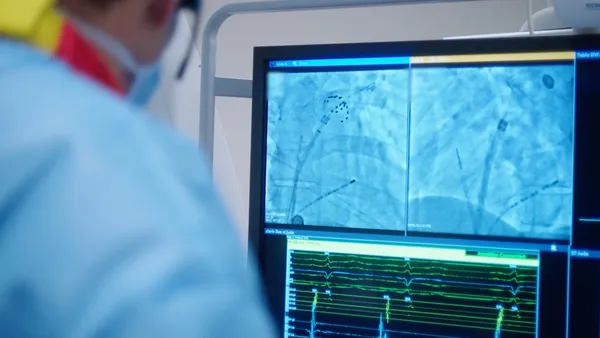Dive Brief:
- Two soon-to-be-released studies of transcatheter aortic valve replacement (TAVR) in low-risk patients, one from Edwards Lifesciences and one from Medtronic, are expected to support use of the less-invasive procedure in an additional population of heart valve patients.
- The studies, to be presented at the American College of Cardiology (ACC) meeting getting underway March 16 in New Orleans, compare the devices to surgical aortic valve replacement (SAVR) in patients one year after treatment.
- According to analysts at Jefferies, who surveyed 25 clinicians ahead of ACC, the studies will "usher in the low risk era for TAVR," expanding the market for the devices whether the data show equivalence to surgery or superiority.
Dive Insight:
TAVR has evolved in roughly 15 years from an option for patients considered high-risk or too frail for traditional open-heart surgery for aortic stenosis to an alternative for intermediate-risk patients. Now, its effectiveness is being studied in low-risk patients.
The success to date of the procedure, in which the replacement valve is threaded through the arteries to the heart via a catheter, has led Edwards CEO Michael Mussallem to project the global TAVR market will grow to $7 billion by 2024, as the patient population eligible for the treatment expands.
At the ACC annual meeting, Edwards will present data for its Sapien 3 valve from the Partner 3 trial and Medtronic will reveal data from a study of its Evolut TAVR system in low-risk aortic stenosis patients.
Analysts at Jefferies polled 25 TAVR clinicians on the implications of the data and found on average they expect 58% of low-risk cases going forward to convert to TAVR from open surgery if the data show equivalence between SAVR and TAVR. The projected number of cases that would convert to TAVR climbs to 74% if the procedure shows superiority to SAVR.
Jefferies analyst Raj Denhoy, in a report to clients, predicted the studies will likely show equivalence between TAVR and more traditional surgery. The reason, he said, is that while TAVR should perform well in low-risk patients, surgical groups also should do better in the low-risk studies than implied in earlier TAVR trials.
"The key point for us is that equivalence in low risk will lead to significant adoption," Denhoy said. "This makes intuitive sense as a minimally invasive procedure will win over an invasive one when all else is equal."
The Jefferies survey also asked doctors to identify the most important factors they will look for in assessing TAVR performance in low-risk patients. Mortality, stroke and valve durability topped the list.
Edwards has said it expects to gain FDA clearance to market its valve in low-risk patients later this year, based on the study results. The company is also enrolling patients in a study of TAVR in the pre-symptomatic population and expects to complete that process in 2020.
Edwards and Medtronic have the only TAVR devices on the U.S. market, but Boston Scientific has persisted in its efforts to claim a slice of the growing business despite a setback. Boston Scientific pulled its Lotus valve from the market in Europe due to an issue with the delivery system locking mechanism, delaying a planned U.S. launch.
Boston Scientific is preparing to reintroduce the Lotus valve in Europe as soon as this month and expects U.S. approval to follow. Use of the device is expected to be restricted to high-risk patients.











